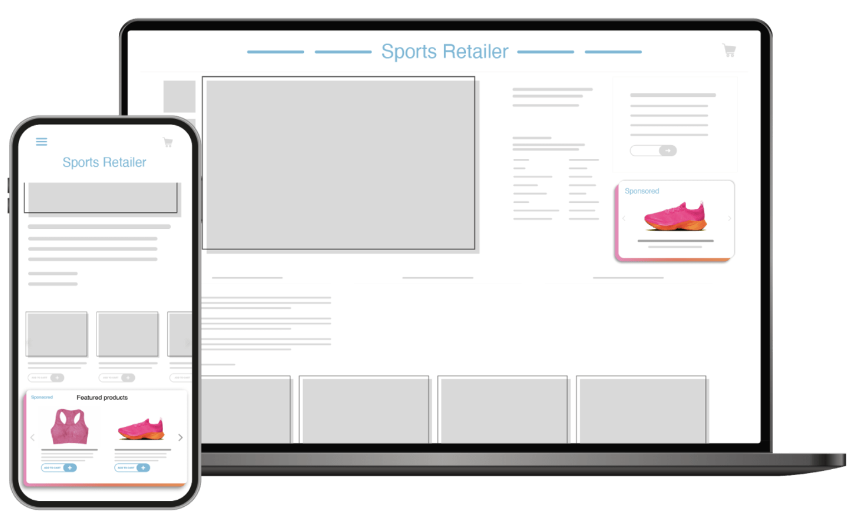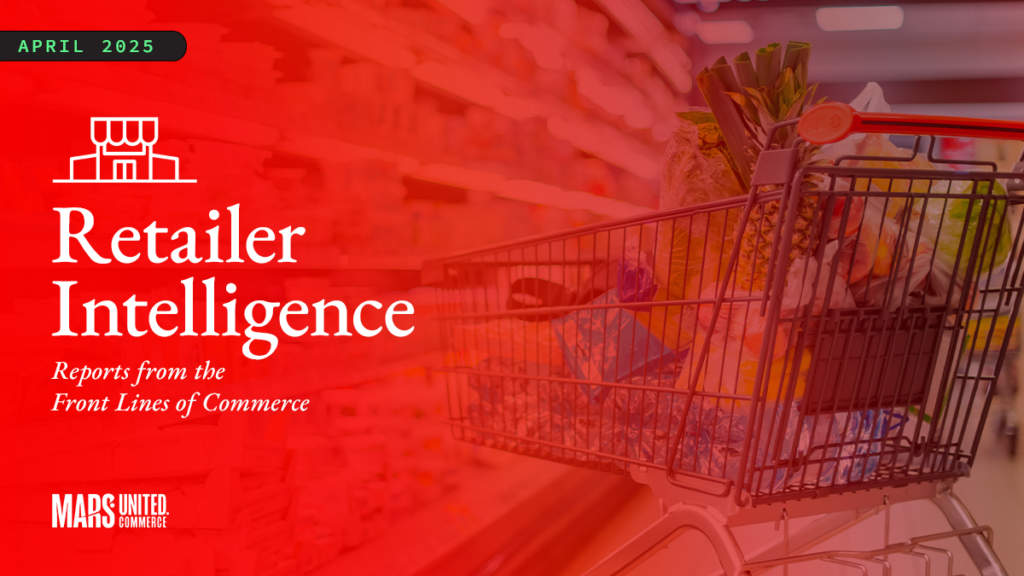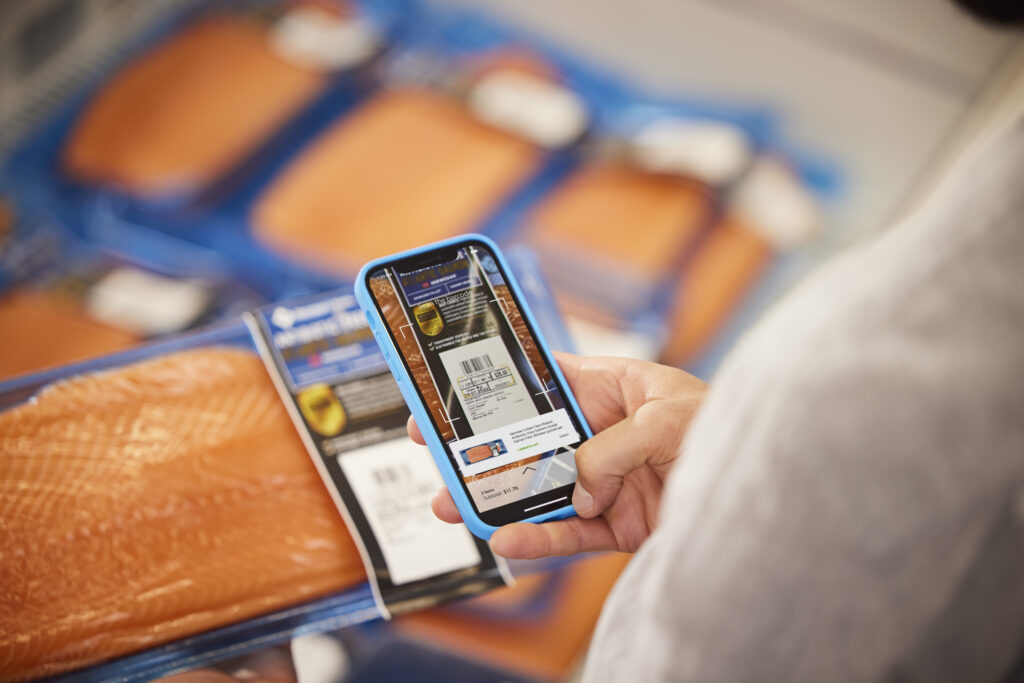Amazon has put a new spin on the old adage, “If you can’t beat ‘em, join ‘em,” through the launch of Amazon Retail Ad Service, a tech solution that gives other retailers access to the tools, shopper insights, and even advertisers that have made Amazon Ads the world’s leading retail media network.

Initially open to any “multi-brand” retailer in the U.S., the cloud-based service gives users all the tools needed to start their own retail media business. It will let retailers monetize their online and in-app traffic by presenting contextually relevant sponsored product ads across search, browse, and product detail pages using the Amazon Ads platform. The offering includes “streamlined access to Amazon’s extensive portfolio of advertisers,” but also lets retailers onboard and manage their own advertisers. (Brands do not have to sell through Amazon to advertise.)
Amazon Ads is touting the service as a benefit for both retailers and brands that are trying to navigate the complex retail media marketplace. “Building a retail media business requires resources. And as retailers develop their own solutions, advertisers must learn how to use each network. This creates more work and inconsistencies across campaigns,” according to a sizzle reel promoting the new offering. Amazon Retail Ad Service gives retailers “tools, insights, and access to advertiser demand,” while “advertisers benefit from a consistent and trusted set of tools and measurement to target, understand, and optimize their campaigns.”

Amazon, of course, is already beating everybody in the retail media universe. Amazon Ads accounts for roughly 75% of all retail media spending in the U.S. and enjoys an even greater share globally, according to various estimates.
But as the marketplace becomes increasingly fragmented through the ongoing launch of new networks, this new service will give Amazon an indirect cut of the ad dollars being spent elsewhere — while putting it in direct competition with existing third-party network operators such as Epsilon Retail Media*, Criteo and Instacart Carrot Ads.
It also addresses the intensifying call among advertisers for a simpler marketplace with fewer and better tools that let them manage activation and learning across retail media networks. This need for cross-retailer visibility is one of the leading trends discussed in Mars United’s recently published Retail Media Report Card Global Yearbook.

“Amazon Ads will gain an even larger share of retail media dollars, as they are now a media company, a tech company and a retailer service provider. This reinforces Amazon’s status as an industry leader and innovator. And it creates a major competitive advantage that will be difficult for other retail networks to replicate,” says Melissa Wightman, VP-Ecommerce at Mars United.
“Smaller retailers without the resources needed to develop their own retail media networks will benefit the most, because they’ll now get a seat at the table,” says Kayla Corridon, Senior Director of Commerce Media at Mars United. (Amazon identified Oriental Trading Company, iHerb, Weee! and Tilly’s as among the early partners.) “Larger players may hesitate because of the competitive implications — especially around data sharing. But might the draw of Amazon’s capabilities prove too tempting to resist? Will we see large-scale adoption?”
Here are some key questions and considerations that Mars United will be seeking to answer in the weeks ahead as they work through implications and opportunities for our brand and retailer clients:
- Which retailers might choose to support Amazon’s new model rather than operating their own media network and analytics capabilities? Will some look to “test” both options to compare performance and analytics?
- Is Amazon expecting the service to drive incremental funding from clients or will it be viewed as part of the overall investment?

- How will activity through the service impact joint business planning, both at competing networks and at Amazon Ads? Will there be incentives and benefits for advertisers that accelerate the service for other retailers?
- Will competitive retailers let buys through Amazon’s service be recognized in their JBPs? (The traffic and sales will still be there, but the dollars will be spent elsewhere.)
- How quickly will the new business scale? What impact might it have on brands and agencies in terms of the resources needed to develop a strategy, optimize activity, and learn?
- Across the industry, will this create incremental funding opportunities or just cannibalize existing ad spend?
“Ultimately, I think this will be a triple win for the marketplace,” said Wightman. “An obvious win for Amazon as a new revenue stream; an eventual win for retailers, since Amazon will help them more effectively, efficiently drive growth and capture share through its great analytics and measurement capabilities; and a win for shoppers through the creation of more relevant solutions that simplify the shopping experience and let to more easily discover products.”

“For brands, this will open up new channels to reach consumers via broader retail networks — which is great,” says Corridon. “However, they’ll need to evaluate whether this creates incremental value or simply reallocates their budgets. Performance will be key and only time will tell in that regard. But this could be a positive gain simply because it broadens reach.”
To learn more about how Mars United can help your brands win at ecommerce across the Amazon ecosystem, contact Melissa Wightman at [email protected]. To learn more about how we can help you win in the retail media marketplace, contact Courtney Crossley at [email protected].
*Epsilon Retail Media and Mars United are both part of the Publicis Groupe.



